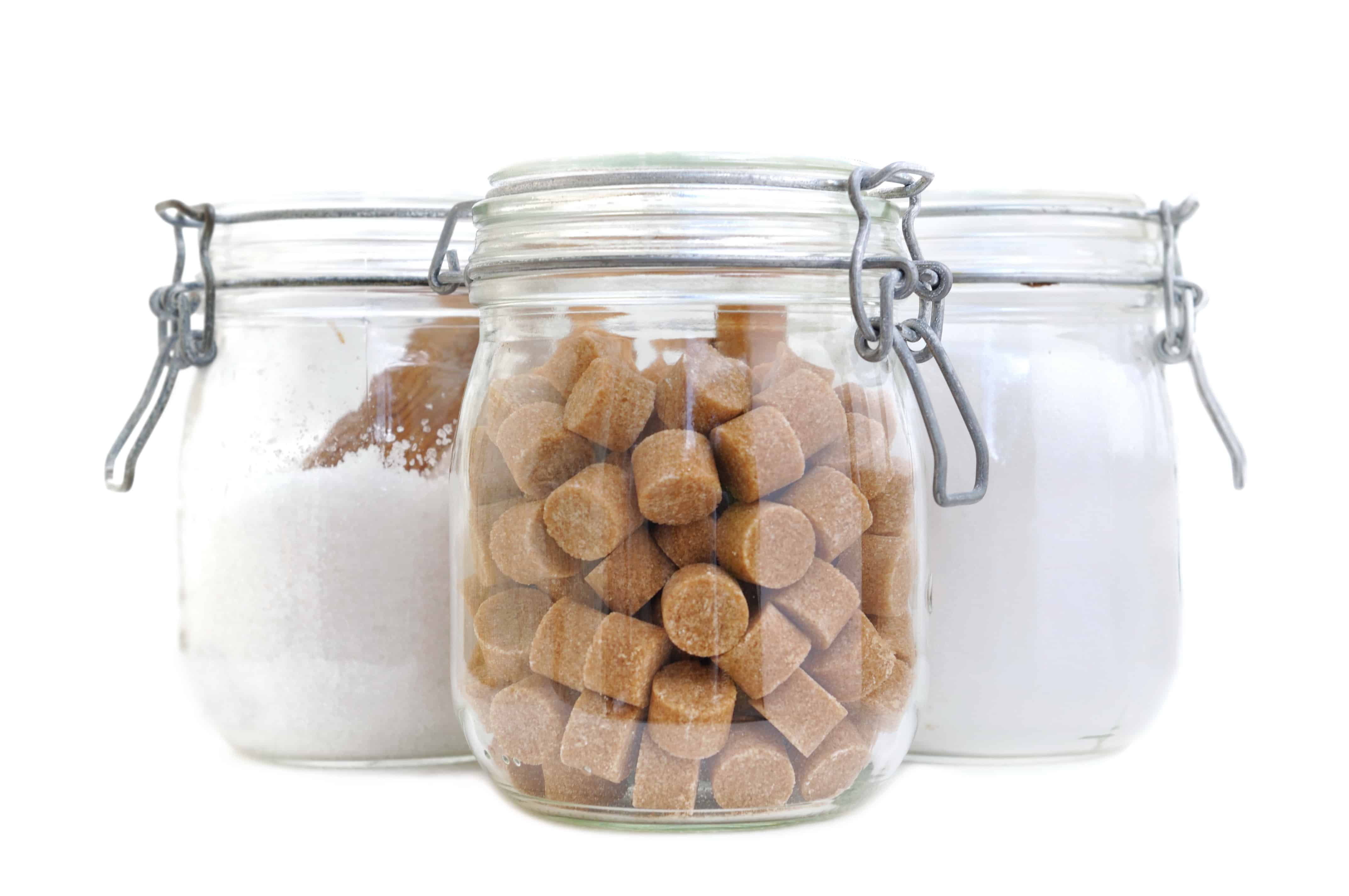
Have you ever asked your significant other to taste something to ensure it hasn’t spoiled? I’m guilty of it! It seems that despite my organization efforts, inevitably, there’s a product in the pantry that I question its freshness. Shelf life can be a tricky and sometimes not so black and white. There’s inconsistent labeling on products from “Best By” to “Use By” to “Expires By.” Then some products have no indication of expiration at all. Raise your hand 🙋🏻 if you’ve ever found something ancient in your pantry and wondered if it was still good. If you can identify, then read on!
The Skinny on “Best By” Dates
Did you know that with the exception of a few products, “Best By” dates are not mandatory? Also, for the food products that do include a “Best By” date, it only refers to the product’s quality when the package is unopened. Quality is different than safety or health! Also, the date does not factor in shelf life once the package is open.
I’m Not Alone
Even when I’ve had a very sparse pantry e.g. when I was in college or single, it was not uncommon to come across expired products in my pantry. You can believe with a family of four that there are expired products despite organizing my pantry on a regular basis. I know I’m not alone in this!
What To Do
So, what are you to do? You have lots of stuff in your pantry and you can’t even rely on the “Best By” date IF it even has a date? Well, I’ve got news for you…check out a few tips, hacks, and best practices below for your most common pantry staples.

Spices / Herbs
Most spices need to be stored in a cool dry space so the pantry is ideal for the majority. You’ll also want to make sure the spices are in a container that has a tight lid. Glass bottles are better than plastic bottles, but both can work. You can see some general shelf life dates below for basic categories of spices/herbs.
General Shelf Life of Spices / Herbs
Now, I don’t know about you, but spices are one of the things I thought lasted forever! Some cooking experts recommend a shelf life of only 6 months for spices. This isn’t because the spice has gone rancid, but because it won’t be as flavorful. Most home cooks don’t cook enough to replace our spices every 6 months. So, to optimize flavor, you can add more spice to any given recipe, or you can buy spices in smaller quantities so they don’t get as old.
If there is a date on the bottle, the below shelf life is the years past the date on the bottle. For example, if you have a jar of ground cinnamon that says it expires in 2018, it is actually good for 3 years past that date, until 2021. If there is not a date on the bottle, you can look for a few clues to determine if it’s still good. For example, the color of the spice will be dulled, a dried herb may have mold on it, or the texture could also have changed.
- Ground Spices – 3 years
- Whole Spices – 4 years
- Leafy Herbs – 3 years
- Seasoning Blends – 2 years
A couple more hacks to extend the shelf life of your spices
You should avoid keeping spices and herbs in direct sunlight, near heat, and moisture. In order to maintain freshness and flavor, spices from the red pepper family, like chili powder, paprika, and red pepper, should be kept in the refrigerator. Due to oil content, seeds like poppy and sesame should also be refrigerated to prevent the oil from going rancid. It is not recommended that spices go in the freezer.

Baking Goods
This is another one many of us are guilty of holding onto too long! If you are not a frequent baker or if you use a wide variety of flours like Almond Flour, Oat Flour etc. it’s likely that you’ve held onto some longer than you should have.
- White Flour — 1 year
- Whole Wheat Flour – 3 months (Can you guess why? If you guessed it’s due to the oil content, you’re right!!! Whole grains have more oils than there white counterparts and the oils make it go rancid faster)
- Baking Powder — 1 year
- Chocolate Chips — 2 years
Shelf Life Hack
Many of these products you can store in the freezer to extend the shelf life!
Oils
Oil has a fairly long shelf life. If it’s gone bad, it may have an odor or taste stale or off. The shelf life listed below is for once the oil is opened.
- Refined Coconut Oil – 3 months past the printed date
- Vegetable Oil – 1 year
- Canola Oil – 1 year
- Extra Virgin Olive Oil – 3 years
- Virgin or Extra Virgin Coconut Oil – indefinite
Dry Goods – Grains, Legumes, and Pasta
While many of these are staples, they still have a shelf life and can go bad. Make sure they are stored in airtight containers to get the maximum life out of them. When whole grains go bad, they may not smell bad, they have a loss of texture and they can grow mold. You’ll also want to check for changes in color.
- Bread Crumbs – 6 months
- Brown Rice — 6 months in the pantry or a year in the freezer
- Dry Pasta — 2 years
- Oats — 3 years
- Quinoa — 3 years
- Popping Corn — indefinitely
- White Rice – indefinitely
- Dried Beans – indefinitely
Canned Goods and Condiments
It’s common to pick up an extra jar of a condiment or extra cans of vegetables to have on hand. Many Food Pantries widely stock canned food because of its stable shelf life. The dates below are for unopened products.
- Mayonnaise — 3 months
- Barbecue Sauce, Ketchup, Mustard, and Salsa — 1 year
- Jams and Jellies — 1 year
- Canned Vegetables – up to 2 years past printed dates
- Canned Soup – up to 2 years past printed dates
- Hot Sauce — 3 years
- Worcestershire Sauce — 4 years
Nuts & Seeds
Nuts still in their shell will not last as long as those unshelled. You can usually tell if nuts have gone bad because they will have a rancid smell. If you’re like me and you buy nuts in bulk, you can store a small amount in the pantry and the remainder in an airtight container in the refrigerator or freezer. As with most foods, this will extend their shelf life.
The shelf life listed below is the maximum life after any printed date for unopened packages.
- Natural Peanut Butter – 3 months
- Walnuts – 6 months
- Pecans – 6 months
- Peanuts – 9 months
- Cashews – 9 months
- Almonds – 1 year
- Smooth or Crunchy Peanut Butter – 1 year
- Chia Seeds – 2+ years
Beverages
While most beverages are kept in the refrigerator, some are kept in the pantry.
- Ground Coffee— 5 months
- Juice Boxes — 6 months
- Whole Bean Coffee — 9 months
- Tea — 1 year
Forever Items
Here’s the good news, some items last indefinitely in the pantry without being spoiled!
- Apple Cider Vinegar
- Baking Soda (unopened)
- Cornstarch
- Distilled White Vinegar
- Dried Beans
- Honey
- Instant Coffee
- Pure Vanilla Extract
- Pure Maple Syrup (unopened)
- Powdered Milk
- Sugar
- Salt
- White Rice
Final Tips to Keep Your Pantry In Check
If it’s time to clean out your pantry you can use these guidelines for confirming they are not expired.
- If the product has a best by date, use the shelf life dates above to estimate if it’s still good or not.
- No best by date… and the product is unopened, try to recall the approximate timeframe of when you purchased it and use the dates above as a guideline as to whether you should keep it or not
- If the product doesn’t have a date, use the sight and smell test to see if there have been any changes to indicate that it’s spoiled.
- Consider what, if any items, you should move to the refrigerator or freezer to preserve longer.
- Make a list of any products you need to replace.
- When you add new products to your pantry, check for the best by date. If it doesn’t have one, mark the purchase date and year on the package. When you open a new package, mark an open date on the package. You can use stickers/labels or depending on the packaging write directly on the package with a permanent marker.
These six steps will help you and your family stay healthy by avoiding expired food that has spoiled. Let’s keep them healthy and safe mama!!!
Grab your free copy of the Pantry Shelf Life Chart in the Free-Bee Library! Sign Up for Free at the end of the post and receive instant access to this printable and all of my downloadable files!









Thank you Melissa,
That is so great.
I am excited to be able to know there is something to go by in keeping things up to date.
I think this is something most people need to know. Most of us don’t want to waste food and certainly don’t want to use foods that have gone bad.
Thank you again